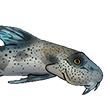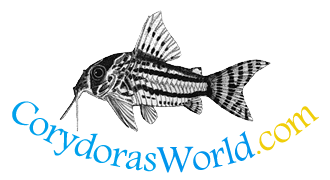
Cory Julii?
Cory Julii?
I know there is some confusion, is this Julii?  Mac.
Mac.


What we anticipate seldom occurs. What we least expect generally happens.
- Fish Demon
- Posts: 188
- Joined: 24 Jan 2004, 21:22
- Location 1: SF Bay Area
- Interests: I keep lots of fish, but I am really interested in catfish (especially corys).
- Coryman
- Expert
- Posts: 2119
- Joined: 30 Dec 2002, 19:06
- My articles: 12
- My catfish: 5
- My BLogs: 1 (i:0, p:46)
- Spotted: 194
- Location 1: Kidderminster UK
- Location 2: Kidderminster, UK
- Interests: Cory's, Loricariids, photography and more Cory's
- Contact:
- Silurus
- Posts: 12440
- Joined: 31 Dec 2002, 11:35
- I've donated: $12.00!
- My articles: 55
- My images: 895
- My catfish: 1
- Spotted: 426
- Location 1: Singapore
- Location 2: Moderator Emeritus
This topic seems to come up quite often, but if you had no way of knowing where they were collected, how would you tell them apart?
The point I am trying to make is whether or not one is a synonym of the other. I have cursorily gone through the literature, and it seems that their distinctiveness has been assumed (but not tested).
The point I am trying to make is whether or not one is a synonym of the other. I have cursorily gone through the literature, and it seems that their distinctiveness has been assumed (but not tested).

I registered here today to get the answer to this very question. C.julii or C.trilineatus? I thought I recently bought a C.julii, but maybe not. Will vertical lines extending up from the central horizontal line do me any good? My fish has them, as well as a bit of a reticulated pattern. It does not have a lot of spots, but some. I am beginning to think it may be a C.trilineatus.
- Fish Demon
- Posts: 188
- Joined: 24 Jan 2004, 21:22
- Location 1: SF Bay Area
- Interests: I keep lots of fish, but I am really interested in catfish (especially corys).
- Jools
- Expert
- Posts: 16238
- Joined: 30 Dec 2002, 15:25
- My articles: 198
- My images: 941
- My catfish: 237
- My aquaria list: 21 (i:13)
- My BLogs: 7 (i:10, p:167)
- My Wishlist: 23
- Spotted: 450
- Location 1: Middle Earth,
- Location 2: Scotland
- Interests: All things aquatic, Sci-Fi, photography and travel. Oh, and beer.
- Contact:
C. trilineatus is a variable, well distributed fish. Even in a netful of half a dozen or so wild caught fish you can notice obvious differences in pattern that, if you saw them in a LFS, might make you think they were different.
C. julii is from north eastern Brazil and C. trilineatus is found throughout the amazon primarily exported from Peru but also from Brazil. Aparently their ranges overlap. Also, C. punctatus is another very similar species again. So even going on collection locality to start telling these fish apart is risky as Silurus points out, direct comparisions appear not to have been made.
The business about one having spots on the head and the other reticulations is aquatic myth I'm afraid.
What we really need someone to do is pop over to the coastal rivers in NE Brazil with a net and a digicam!
The current view is that unless we know exactly where they came from, it's C. trilineatus.
Jools
C. julii is from north eastern Brazil and C. trilineatus is found throughout the amazon primarily exported from Peru but also from Brazil. Aparently their ranges overlap. Also, C. punctatus is another very similar species again. So even going on collection locality to start telling these fish apart is risky as Silurus points out, direct comparisions appear not to have been made.
The business about one having spots on the head and the other reticulations is aquatic myth I'm afraid.
What we really need someone to do is pop over to the coastal rivers in NE Brazil with a net and a digicam!
The current view is that unless we know exactly where they came from, it's C. trilineatus.
Jools
Owner, AquaticRepublic.com, PlanetCatfish.com & ZebraPleco.com. Please consider donating towards this site's running costs.







